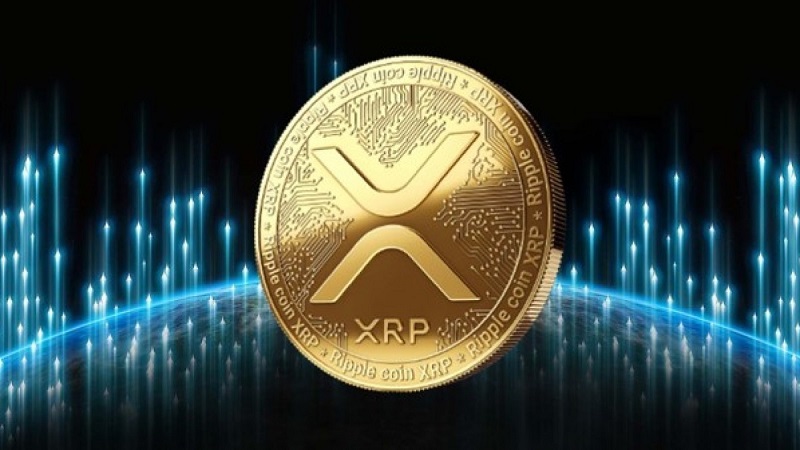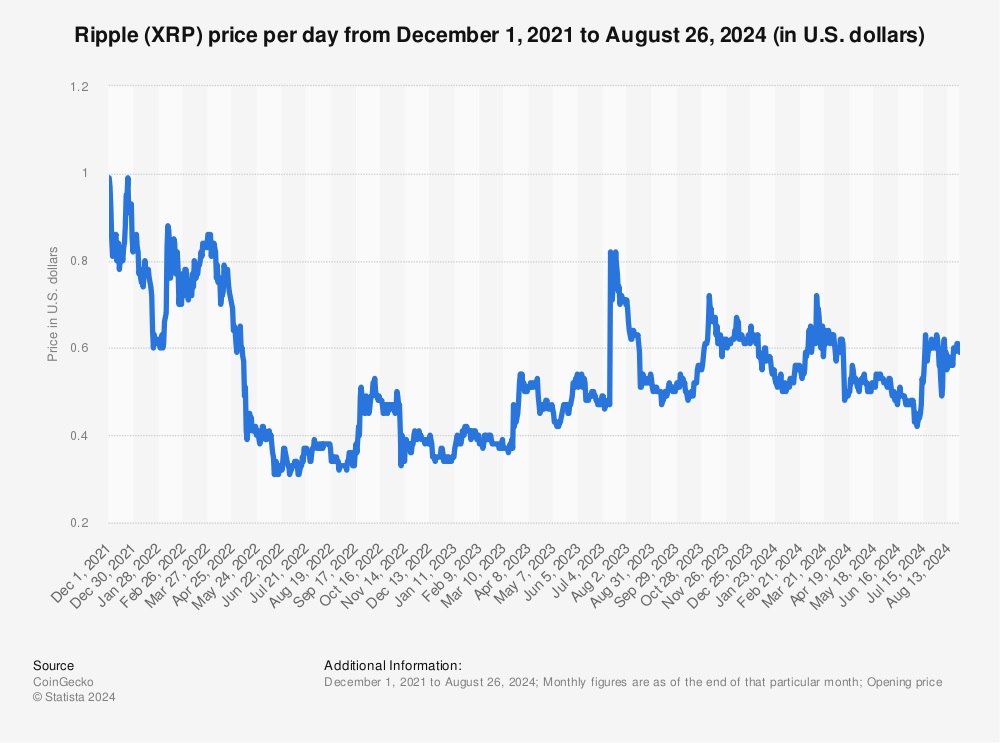
Ripple Cryptocurrency Review
Ripple (XRP) is a digital currency and a payment protocol that was launched in 2012. It is primarily known for its digital payment network and protocol more than as a standalone cryptocurrency. Unlike traditional cryptocurrencies, Ripple doesn’t rely on blockchain technology. Instead, it uses a unique distributed consensus mechanism through a network of servers to validate transactions. This makes Ripple a different type of digital asset, designed to facilitate international payments more efficiently and cost-effectively.
Initially created by Ripple Labs, Ripple’s main aim was to create a secure, instant, and nearly free global financial transaction service of any size with no chargebacks. Ripple can support tokens representing fiat currency, cryptocurrency, commodity, or any other unit of value such as frequent flier miles or mobile minutes. This ability has allowed Ripple to become a key player in the cross-border payment space, particularly in partnerships with financial institutions and banks.
What Kind of Currency is Ripple and When Did It Appear?
Ripple, or XRP, emerged in 2012 as a solution to the inefficiencies associated with international payments. Unlike Bitcoin, which was designed as a decentralized digital currency, Ripple was created to work as a payment settlement, asset exchange, and remittance system. Ripple Labs, the company behind Ripple, saw an opportunity to address the lengthy transaction times and high fees typical of cross-border payments.
Ripple’s main attraction is its use as a bridge currency in cross-border transactions, allowing banks to settle payments faster and more securely. This innovation has positioned Ripple not only as a cryptocurrency but also as a facilitator of real-time gross settlement systems. It effectively bypasses the need for a traditional banking intermediary and currency conversion, making it a valuable asset for financial institutions looking to optimize their payment networks.
What Cryptocurrency is Ripple Based On?
Ripple is unique in the crypto space because it is not based on a traditional blockchain like Bitcoin or Ethereum. Instead, Ripple operates on an open-source protocol known as the Ripple Protocol Consensus Algorithm (RPCA). This protocol uses a consensus ledger and a unique consensus mechanism to validate transactions. In this system, transactions are validated by a consensus of network participants rather than by mining, which is common in many other cryptocurrencies.
The Ripple network utilizes a distributed open-source protocol, decentralized consensus ledger, and its native cryptocurrency, XRP. This structure allows it to provide real-time transactions, making it an attractive alternative for financial institutions. By not relying on a blockchain, Ripple is able to offer faster transaction speeds, typically processing transactions in just a few seconds compared to the minutes or even hours required by other cryptocurrencies.
What Major Exchanges Is Ripple Listed On?
Ripple (XRP) is widely listed on a variety of major cryptocurrency exchanges around the globe. These include popular platforms such as Binance, Bitstamp, and Kraken. Binance, one of the largest cryptocurrency exchanges by volume, offers multiple XRP trading pairs, making it accessible to a wide range of users. Similarly, Bitstamp, one of the longest-standing exchanges, provides a trusted platform for trading XRP.
Other notable exchanges where Ripple is listed include Huobi, OKEx, and Bitfinex. These platforms offer high liquidity and trading volume, ensuring that XRP can be easily traded and accessed by a large audience. Each of these exchanges offers various trading pairs, allowing users to trade XRP against other cryptocurrencies such as Bitcoin, Ethereum, and even stablecoins like USDT.
Ripple’s presence on such a diverse array of exchanges signifies its broad acceptance in the cryptocurrency market. The extensive listing of XRP across these platforms also indicates strong support from the trading community, making it one of the more stable and widely traded digital assets available today.

How Independent Is It and How Stable Is It?
Ripple’s independence and stability are topics of considerable interest within the cryptocurrency community. While Ripple Labs has control over the release of XRP tokens, the network itself operates on a decentralized protocol. This means that, theoretically, Ripple can function independently of Ripple Labs. However, the company’s significant holding of XRP tokens has raised questions about centralization and its impact on the token’s stability.
The stability of Ripple is somewhat reinforced by its partnerships with established financial institutions. Ripple’s technology is already being utilized by banks and payment providers around the world, which lends a degree of legitimacy and stability to the cryptocurrency. The use of XRP for liquidity in cross-border payments also provides a consistent demand for the token, which can contribute to its price stability.
However, Ripple’s stability has also been tested by regulatory challenges, particularly in the United States. The ongoing lawsuit with the Securities and Exchange Commission (SEC) has created uncertainty around Ripple’s regulatory status. Despite these challenges, Ripple’s value proposition as a bridge currency for international payments continues to attract interest, and it remains a key player in the digital asset space.
While regulatory issues pose a risk to Ripple’s independence and stability, its unique value proposition and established use cases suggest that it will continue to play a significant role in the cryptocurrency market. Ripple’s ability to adapt and respond to regulatory pressures will be crucial in determining its future trajectory.
Is It Worth Investing in This Cryptocurrency?
Investing in Ripple (XRP) carries both opportunities and risks. On one hand, Ripple’s established use case as a facilitator of cross-border payments makes it an attractive option for investors looking for digital assets with real-world applications. Ripple’s partnerships with major financial institutions and its ability to offer quick and low-cost international transactions provide a strong use case that underpins its value.
However, potential investors should also be aware of the risks associated with Ripple. The ongoing SEC lawsuit has created significant uncertainty around Ripple’s future, particularly in the US market. Regulatory risks are a key factor to consider, and the outcome of this lawsuit could have a substantial impact on Ripple’s price and its ability to operate freely in certain markets.
In conclusion, while Ripple offers a compelling investment opportunity due to its innovative technology and partnerships, potential investors should carefully consider the regulatory risks and market volatility associated with this cryptocurrency. As with any investment, it is crucial to conduct thorough research and consider both the potential rewards and risks before investing in Ripple.




